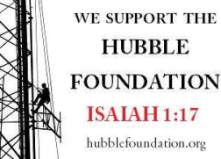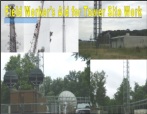Podcast: Play in new window | Download | Embed
Subscribe: Apple Podcasts | RSS
This is an older story, but very relevant and it just hit me what an important part PCIA will play in setting training standards. Thanks to a post in Facebook I found an article stating, and I quote, “PCIA, the Wireless Infrastructure Association, will be responsible for orchestrating the wireless worker training programs. Once the worker completes the apprenticeship, they will be awarded a credential of technical proficiency that is nationally recognized. Not only will this increase on-the-job safety, it will also help fill the thousands of open positions that are searching for experienced climbers.” That came from an Inside Towers article, “Climber Safety Finally Takes a High Priority”. So that really helps knowing that PCIA is going to take ownership of the standardization of industry training. I thought it would have been NATE but if PCIA is going to sign up, great. I found out (remembered) that PCIA has won a $750,000 grant from the Department of Labor, (articles in RCR here and here and PCIA press release here), so now the responsibility for the training programs will fall on PCIA. I would have thought NATE would be more involved but chances are it will encompass more than just climber programs. PCIA has received $750,000 of tax money to do this so the feds are counting on them to make a difference. This is a huge responsibility so let’s see who they recruit for help.
Just a note, PCIA is the wireless infrastructure association, not the professional climbers’ instructors association.
So I looked over the members of PCIA to see who would be helping to make this happen. It seems all the carriers are paying dues, AT&T, Sprint, Verizon Wireless, and T-Mobile as well as some others. They should be doing all that they can to help the climbing companies stay honest and get paid, right? Getting paid is a huge part of safety because it costs money to train and buy safety gear. I see tower owners like American Tower and Crown Castle, I see contractors like Black and Veatch. I see tower companies like MasTech. So maybe PCIA can make a change. Maybe they will work with the tower crews to make the industry better by getting the crews paid and insuring that the safety standards are followed by everyone. Maybe they can help lower the number of subcontractor layers from 6 down to 2 or 3. Maybe PCIA can step in and really help out here, which I personally would welcome as long as they add value to the crews doing the work.
However, this concerns me because it hasn’t changed in the past 5 years, has it? The carriers have a huge part to play in deployments for the past 10+ years, and we seem to be declining in the actual practice of safety and ethics in the business. Why? The carriers are the largest contributors to PCIA. PCIA has the opportunity to change the business practice along with the training requirements. I know that the people working for the carriers really care, they are looking into safety and they put requirements in the RFPs.The people working there do all that they can to make sure the contractors are safe.
So is it making it down to the workers? Then why do we still have so many issues with safety and payments? Have they made progress in the past 5 years? Tell me what you think! I am asking so here is a good place to offer feedback.
Go to my products page and look for something you may need. If you are starting out I have an eBook or Audiobook, Tower Climbing: An Introduction for you. If you work at tower sites I have the Field Worker’s Aid for Tower Site Work. If you want to make understand the SOW and how it can help you get paid or at least take the customer to court go ahead and order my SOW Training files. Maybe you want to look over the free SOW Overview first. Go ahead and share the information! Let others know.
One more thing, to be fair, Virginia State University won $3.25 Million to fund wireless training programs. There will be another $750,000 awarded later. (Article here.)
My last thought here, the mission statement of PCIA is “Help our members succeed in enabling wireless communications”. I would like to think that they would “help our members to responsibly succeed in safely enabling wireless communications”. If the industry is to police itself, we need all the help we can get. I expect PCIA to play a part in it. After all, people have died building systems for their members, literally. Many more got hurt. They bare some responsibility.
I know most of the tower climbers care for each other like brothers, but does the rest of the industry? I know many that do. Let me ask the tower climbers, how many of you are members of the PCIA? MasTech is a member, do they represent your concerns? Does AT&T or Verizon or Sprint or T-Mobile?
So buckle up and get ready for PCIA to set deployment standards that will make the business safe and reputable.
Be smart, be safe, and pay attention to safety, your life depends on it!

Listen, this is the time to support the Hubble Foundation because they are looking after climbers and their families that can’t take care of themselves. When a climber gets hurt, they want to help. When a climber is stranded and needs help to get home, they are there. When a climber gets stuck somewhere because they won’t get paid, they are there. Would you want someone to help you out if that happened?
By the way, OSHA has not updated their site yet with the latest fatality numbers. OSHA Communications Tower
See more for yourself in these links.
Inside Towers Alexia Sparling, Climber Safety takes priority
PCIA Mission statement
PCIA staff
RCR on the job Training
OSHA Communication Towers website
Wireless Estimator Bluebook

























